Learn to make the best smoked chuck roast burnt ends, with amazing bark in each succulent bite. I share my secrets that turn cubed chuck roast into true meat magic. This poor man’s burnt ends recipe creates tender and juicy bite-sized pieces of beef with incredible bark and mouthwatering deep, rich BBQ flavor. It’s an easy smoker recipe that makes phenomenal burnt ends on a budget.
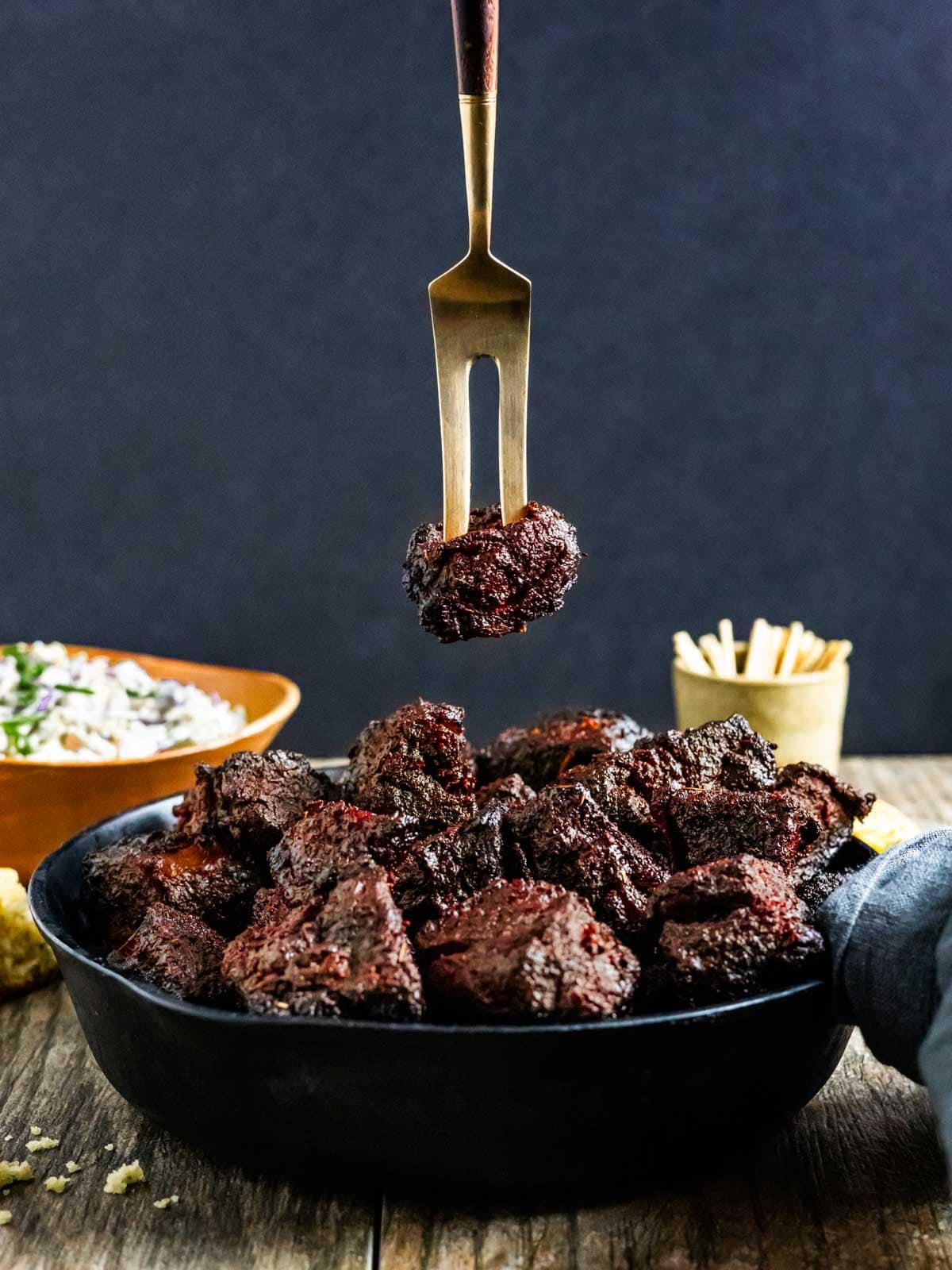
Jump to:
Show me the bark!! This beef burnt ends recipe takes simple chuck roast from mediocre to absolute magic. These are made in a similar way to my Smoked Beef Ribs. This method produces incredible flavor and tender, succulent chunks of beef. They don't last long - they’re always devoured in short order when they come off the grill.
Why this is the best chuck roast burnt ends recipe
There are three main reasons that set this recipe apart.
1. Cut the chuck roast before smoking
Most recipes smoke the entire chuck roast whole, then cut into pieces after it’s cooked. Why cutting into pieces first is the best method:
- Better flavor – cutting the chuck roast into cubes allows the flavor of the rub and smoke to penetrate deep into the meat, creating more flavor in every bite
- More bark – more surface area exposed in the smoker means bark on all sides of each piece. A whole roast won't get as much exposure in the smoker.
- Faster – smoking in pieces reduces the cook time
2. Use a wet rub
While using a dry rub is a fine option, I find that coating the pieces in mustard first not only helps the BBQ rub adhere to the surface better, but it adds an extra layer of flavor.
3. Marinate overnight (optional)
Marinating the cubes in the refrigerator, uncovered, overnight infuses the meat with extra flavor. This is an optional step, but I have found the flavor to be superior to just applying the rub and placing the meat on the grill. If you don’t want to prep the day before, letting the cubes marinate even an hour or two makes a difference and boosts the flavor.
Why you’ll love this recipe
- Great flavor on a budget – smoking a chuck roast instead of brisket (like in traditional burnt ends) is a great, economical option, with amazing flavor
- Fast and easy – smoking chuck roast takes less time than smoking a whole brisket
- Succulent with maximum bark – cooking low and slow creates an amazing bark crust, full of flavor. The wet rub bakes into a blanket of tastiness in each bite.
- Special diet friendly – enjoy this delicious treat on keto, low-FODMAP, paleo, Whole30 and AIP diet plans. Just be sure the dry rubs and BBQ sauces are compliant with your particular diet. There are great options in my Spices and Rubs and Sauces sections that are delicious and sugar-free – because great barbecue doesn’t rely on sugar!
What are poor man’s burnt ends?
This term simply refers to the cut of meat used to make beef burnt ends, which is chuck roast, as opposed to brisket. Chuck roast is typically more economical because it costs less per pound and is available in smaller cuts than brisket.

Ingredients
See the recipe card below for complete measurements and instructions.
- Chuck roast – use about 4 pounds, cut into 1.5 inch x 1.5 inch cubes. They will shrink to about half this size after cooking – perfect bite sized pieces.
- Beef or BBQ rub – I like to use my Sugar-free Homemade BBQ Rub or Homemade Beef Rub
- BBQ sauce – use your favorite. For this recipe, I used my Easy No-Cook BBQ Sauce, which is zesty and tangy.
- Broth – I find using a little bit to thin out the BBQ sauce is helpful in getting full coverage of each piece
- Mustard – for the wet rub. It adds flavor and helps the dry rub adhere to the surfaces of the cubes. Use olive oil for AIP.
- Water and apple cider vinegar – to spritz the beef during smoking
How to make Traeger Burnt Ends
I have a Traeger Pro 22 grill, but you can use any smoker or pellet grill for this recipe.
Whether you are marinating overnight or not, pre-heat your smoker to 180°F when you are ready to start cooking.
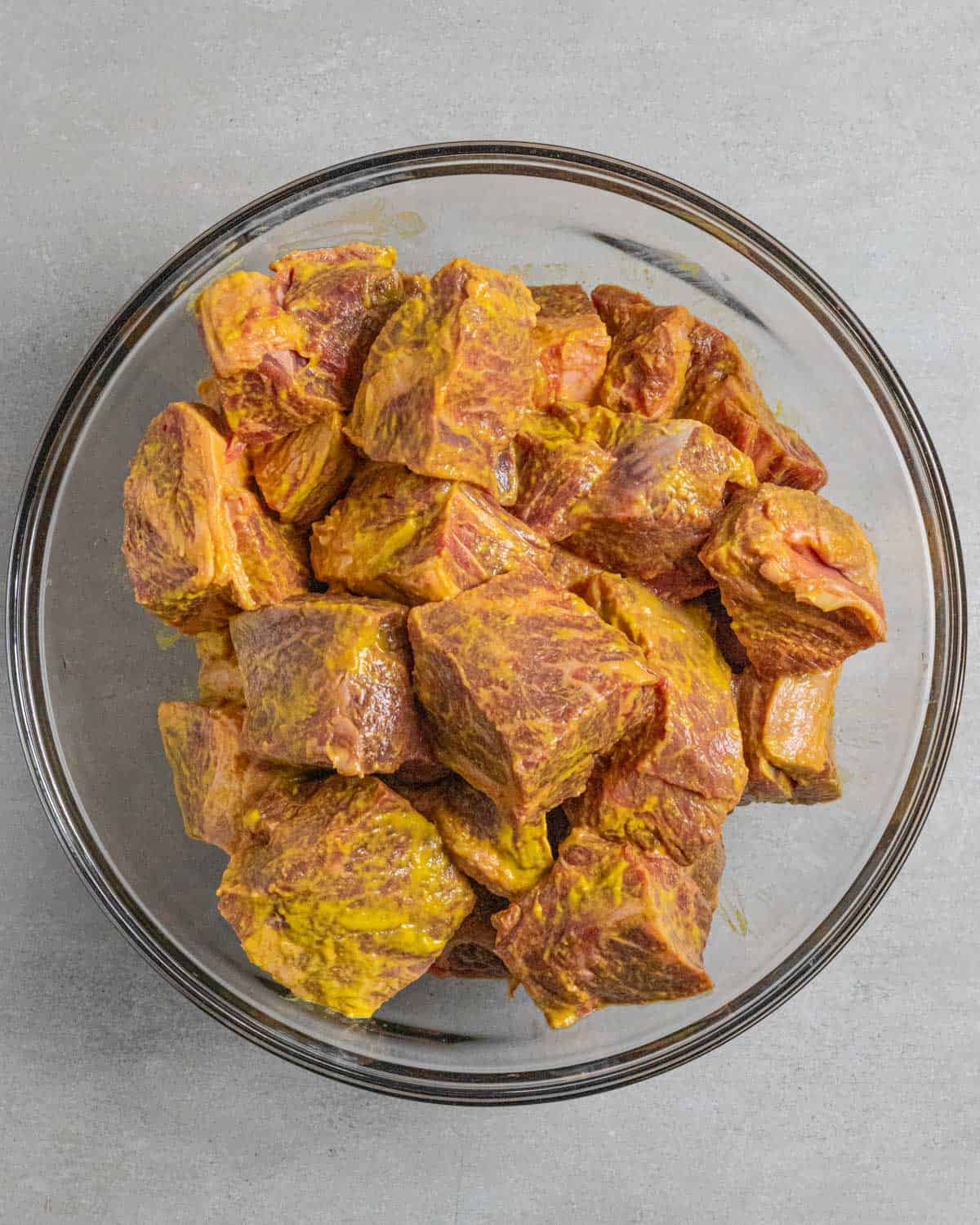
Add the beef and mustard to a large bowl and toss until all sides of the cubes are coated.

- Season the cubes with your favorite dry rub. I like to hold a piece in one hand and rotate it while sprinkling the rub over the surface to make sure it's covered on all sides.
- Optional: After seasoning, place uncovered in the refrigerator from one hour to overnight to marinate.
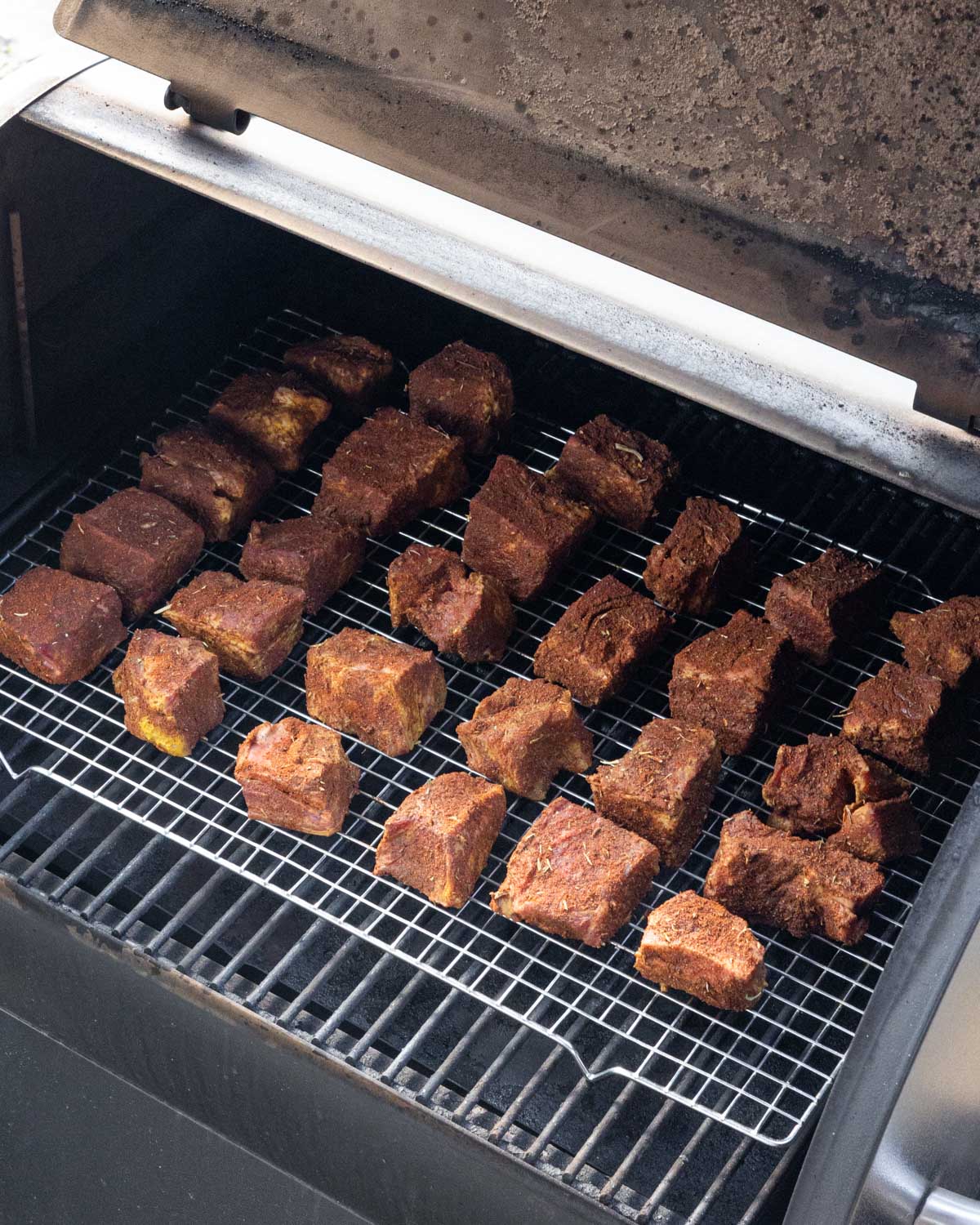
- Place the cubes on a rack and then into the smoker. It’s best to space them out as much as possible so they’re not touching. This ensures the heat and smoke penetrates all the surfaces for the best bark.
- Smoke for 1 hour at 180°F
TIP: Putting the pieces on a rack on the grill is optional. I do this so I can put them onto the grill all at once and not lose as much heat in the smoker.
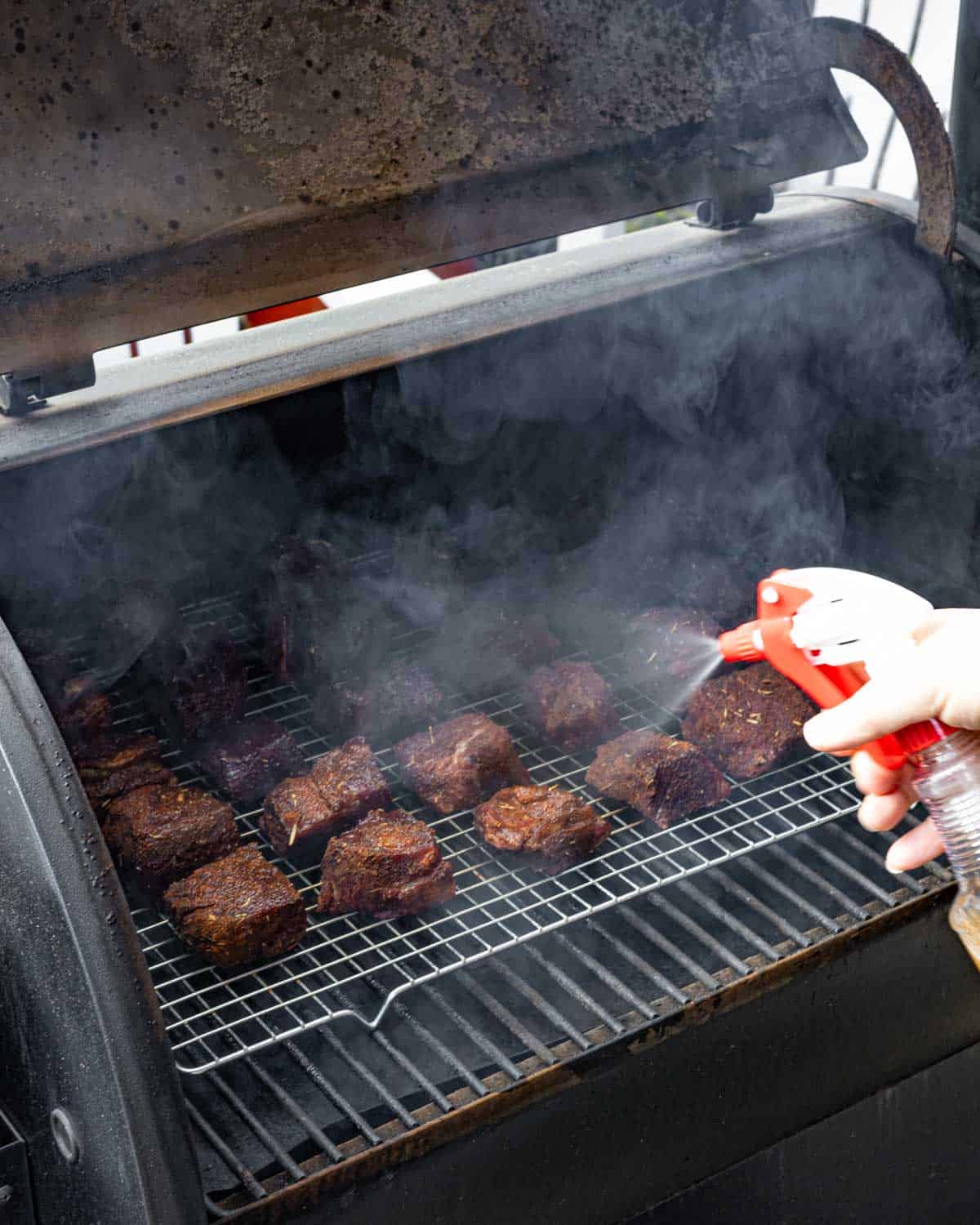
- Combine a 50/50 solution of water and apple cider vinegar in a food-safe spray bottle
- Spritz the pieces until just damp
- Increase the temperature of the smoker to 250°F and smoke for another hour
- Spritz again and smoke for 30 minutes
TIP: Why spritz? Spritzing smoked beef with a mix of apple cider vinegar and water helps keep the meat moist, and aids in the creation of the best bark.
Combine the broth and BBQ sauce in a small bowl.
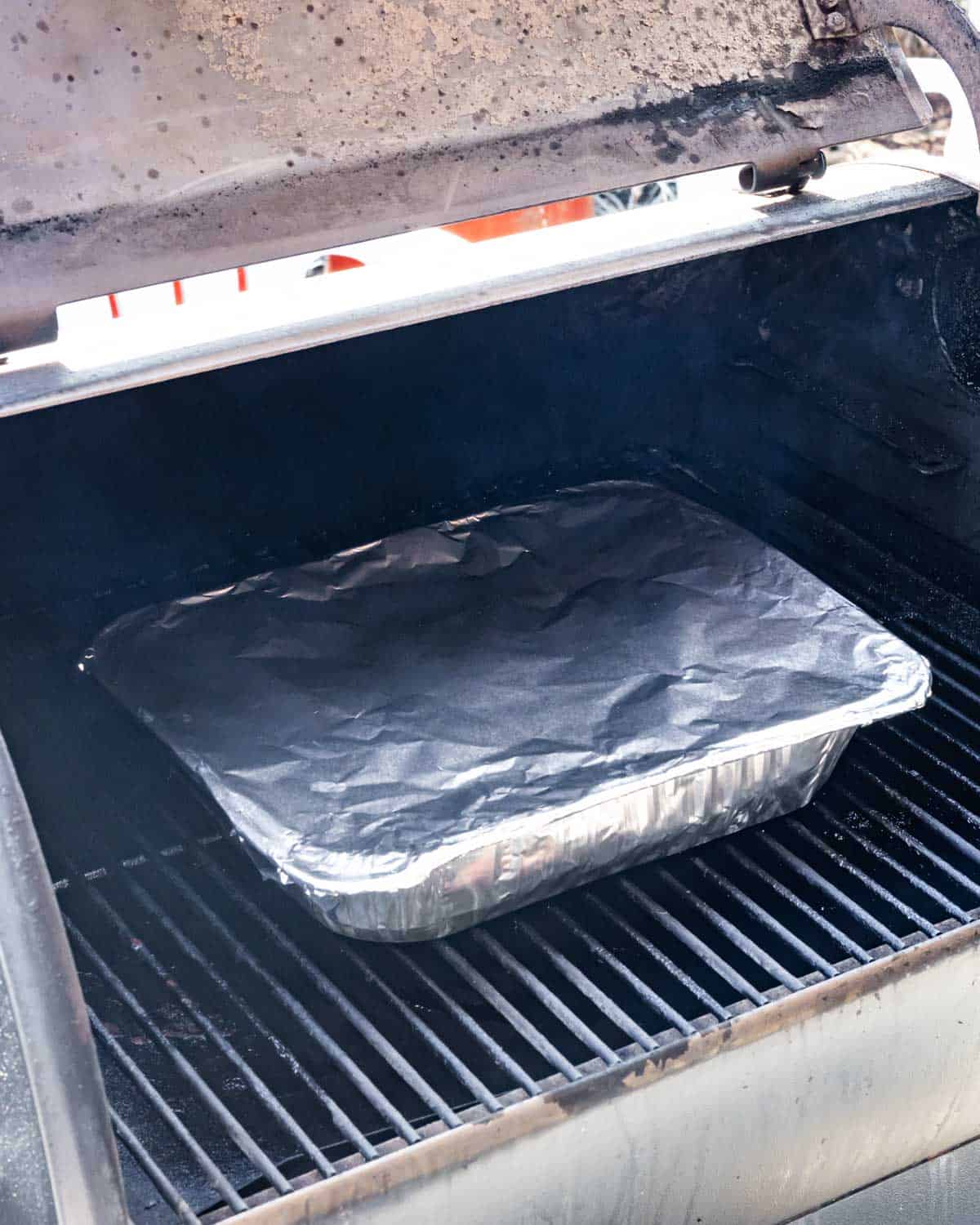
- Transfer the chuck pieces to a foil baking pan, pour the BBQ sauce mixture over the beef and stir until each piece is coated in sauce
- Cover with foil and return to the grill for an additional 90 minutes
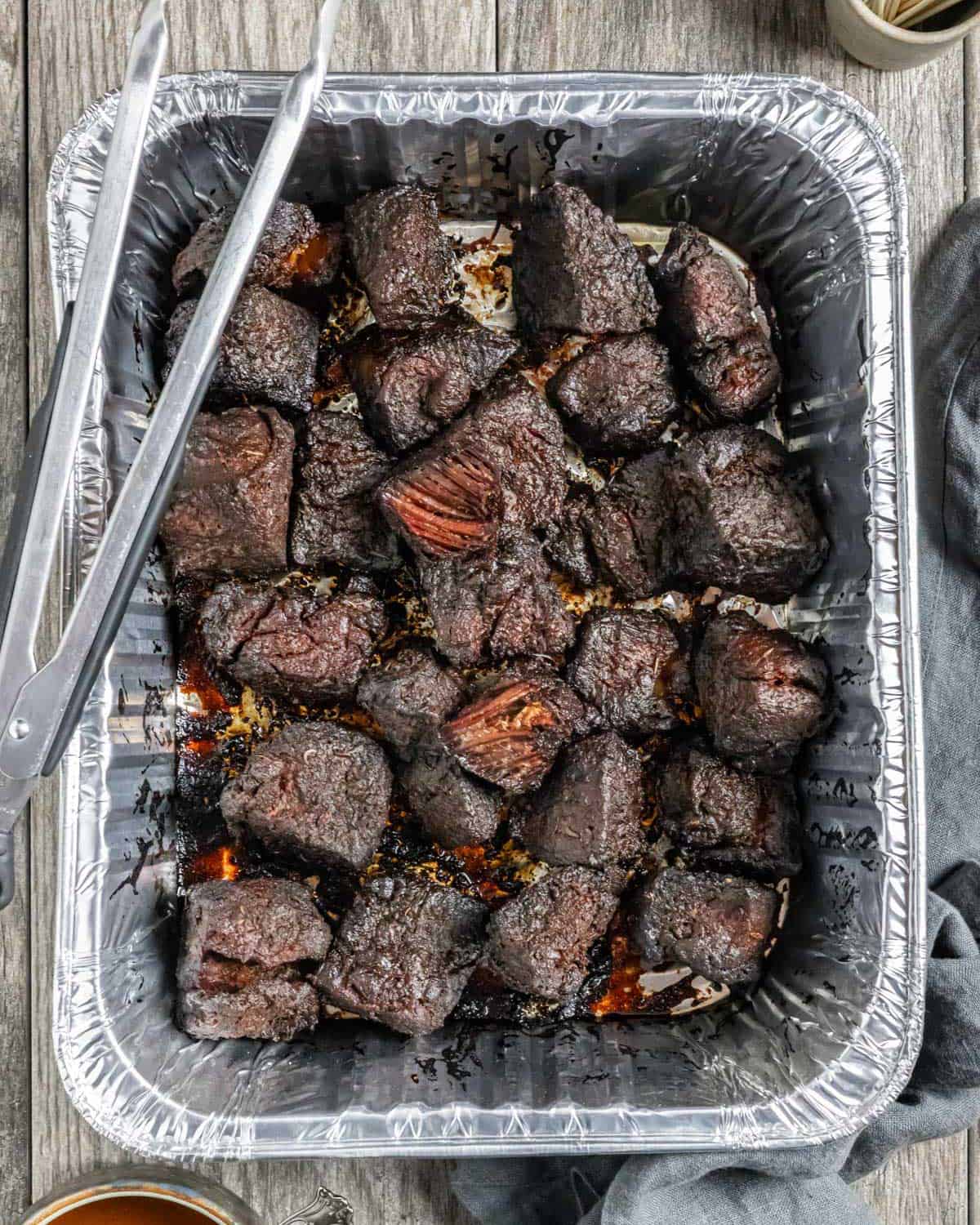
Temp several pieces with a meat thermometer. Internal temperature should be between 200-210°F for maximum tenderness.
The size of your burnt ends after smoking will depend on the fat content of your roast.
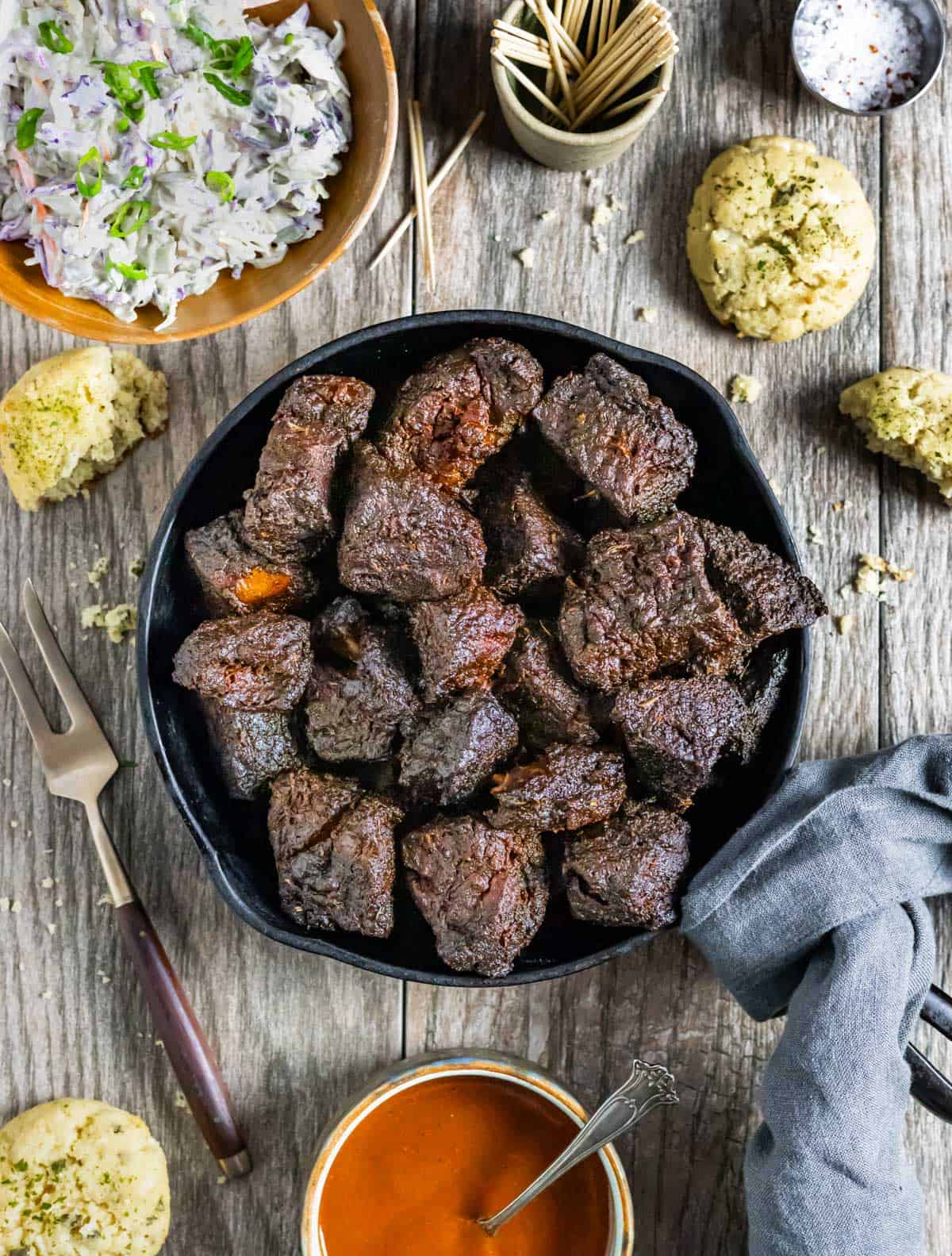
Serving suggestions
- Entrée – these can absolutely be a main course! Serve up traditional BBQ style with Homemade Coleslaw and Cheddar Almond Flour Biscuits
- Appetizer – the tender cubes are perfect finger food, or serve individually with a toothpick
- Burnt ends sandwich – a perfect complement to any slice of bread or soft bun
- Breakfast – pair with a fried egg and avocado for a sensational way to start the day
- On salad – serve on your favorite greens with Homemade Blue Cheese Dressing
How to store
If there happen to be leftovers, store in a sealed container in the refrigerator for up to 4 days or consider freezing.
FAQ
Both are large cuts of beef, best cooked low and slow. However, they have different flavors and textures. Chuck roast comes from the shoulder portion, is more marbled, and has intense beef flavor. Chuck makes great pot roast and ground beef. A chuck roast typically weighs 3-4 pounds, and is often less expensive per pound than highly prized brisket. It’s easier to find, which makes it a great choice for smoking and cooking year round.
Brisket is a thinner, flat cut that comes from the chest portion, with a deep, savory flavor with less beefy taste and a unique grain and texture. Brisket is lean, and perfect for low and slow cooking. It contains two sections: a flat section that has a uniform shape and a ‘point’ that is more fatty and marbled, which is the ‘burnt end’ portion of the cut.
Burnt Ends are normally associated with smoking brisket where the point section of the muscle can get overcooked while the flat muscle is still coming up to temperature. Typically, people remove the point from the cooked brisket, chop it into smaller chunks and smoke it longer covered in BBQ sauce until tender.
Yes! If you don’t have a smoker, follow the same directions for preparation and bake them in the oven. Cooking time will remain the same. Keep in mind that they won’t develop the same bark as cooking in a smoker. Also, it’s best not cover them with foil after adding the BBQ sauce to ensure they get crisp.
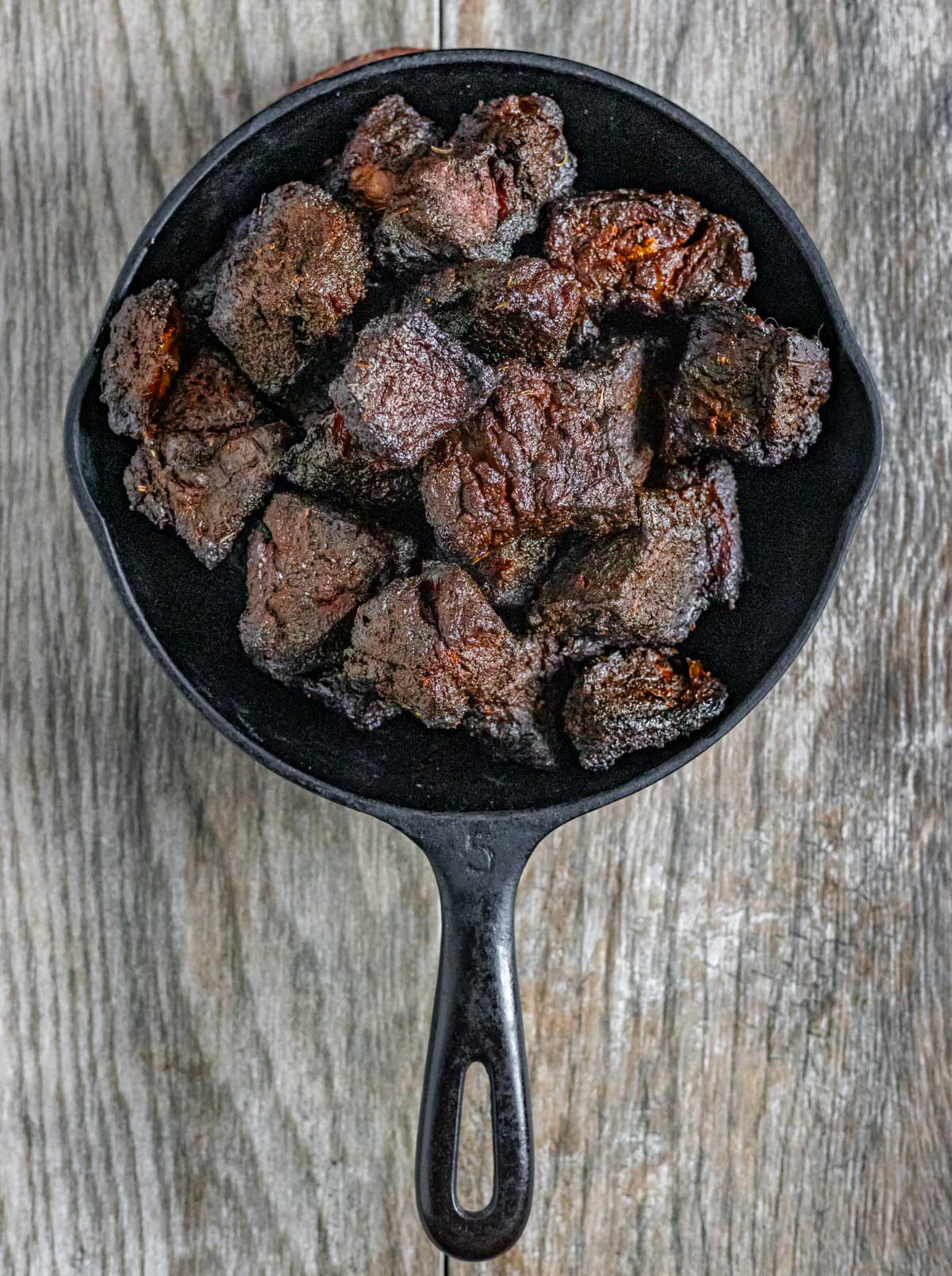
More popular smoker recipes
Did you make this recipe? Let me know how you liked it by giving a star rating and leaving a comment!
📖 Recipe
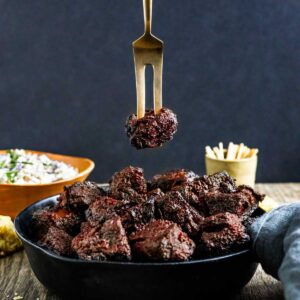
Best Chuck Roast Burnt Ends
Ingredients
- 4 pounds chuck roast (cut into 1.5 inch x 1.5 inch cubes)
- ½ cup barbecue sauce (I use this No-Cook BBQ Sauce recipe)
- ⅛ cup beef broth (or use this homemade bone broth)
- ⅓ cup dry rub (I like to use my Homemade BBQ Rub or Beef Rub recipe)
- ¼ cup yellow mustard (use olive oil for AIP)
- apple cider vinegar (just enough for your spray bottle)
- water (to mix with the apple cider vinegar)
Instructions
NEW:
- Whether you are marinating overnight or not (see Notes), preheat your smoker to 180°F when you are ready to start cooking.
- Add the beef and mustard to a large bowl and toss until all sides of the cubes are coated.
- Season the cubes with your favorite dry rub.
- Optional: Place uncovered in the refrigerator from one hour to overnight to marinate.
- Place the cubes on a rack and place in the smoker (see Expert Tips in Notes). It’s best to space them out as much as possible so they’re not touching. This ensures the heat and smoke penetrates all the surfaces, for the best bark.
- Smoke for 1 hour at 180°F.
- Combine a 50/50 solution of water and apple cider vinegar in a food-safe spray bottle. Spritz the pieces until just damp (see Expert Tips in Notes).
- Increase the temperature in the smoker to 250°F. Close the lid and smoke for 1 hour at 250°F.
- Spritz again, and smoke for 30 minutes at 250°F.
- Combine the broth and BBQ sauce in a small bowl.
- Transfer the chuck pieces to a foil baking pan, pour the BBQ sauce mixture over the beef and stir until each piece is coated in sauce.
- Cover with foil and return to the grill for an additional 90 minutes at 250°F.
- Temp several pieces with a meat thermometer. Internal temperature should be between 200-210°F for maximum tenderness.
Notes
Optional, but recommended: Marinate overnight
Like any steak or roast, I like to marinate the cubes in the refrigerator, uncovered, overnight so the meat gets infused with flavor. This is an optional step, but I have found the flavor to be superior to just applying the rub and placing the meat on the grill. If you don’t want to prep the day before, letting the cubes marinate even an hour or two makes a difference.Expert Tips:
- Putting the pieces on a rack on the grill is optional. I do this so I can put them onto and remove them from the grill all at once and not lose as much heat in the smoker.
- Spritzing smoked beef with a mix of apple cider vinegar and water helps keep the meat moist and aids in the creation of the best bark.
Nutrition
*Net carbs = carbohydrates - fiber
Nutritional information is an estimate, calculated using online tools and does not include optional ingredients unless otherwise indicated.

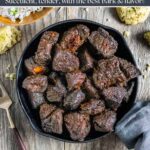
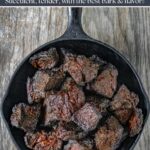
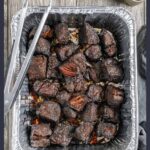
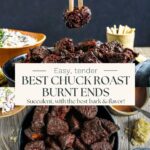
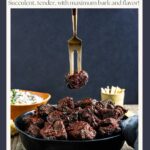
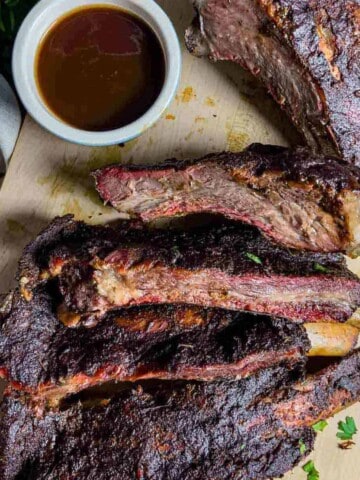

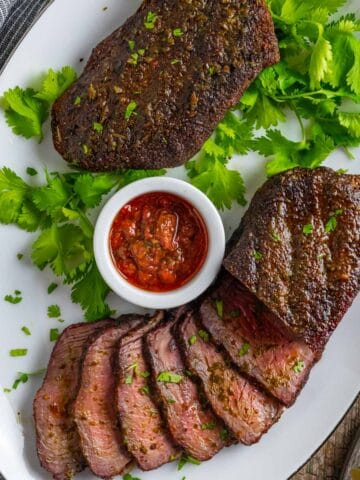
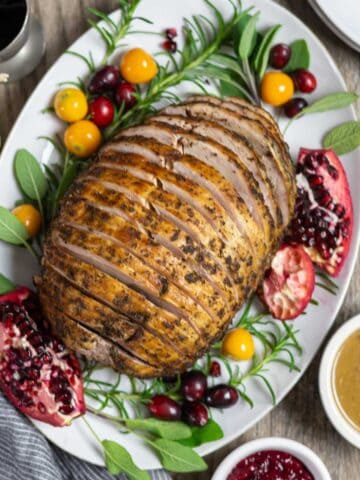
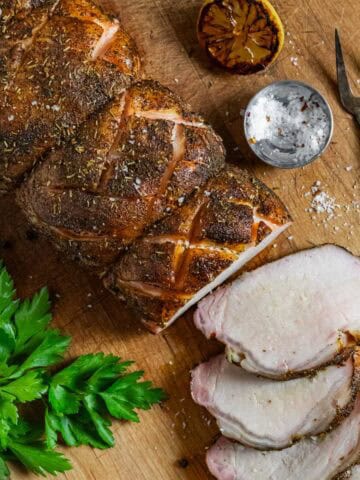
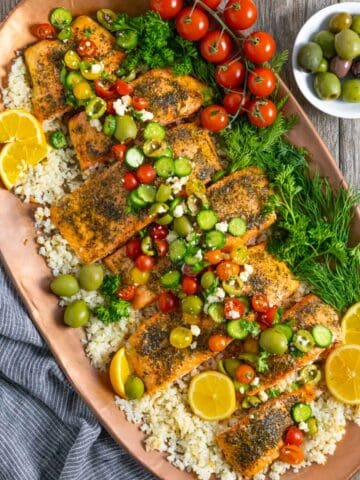
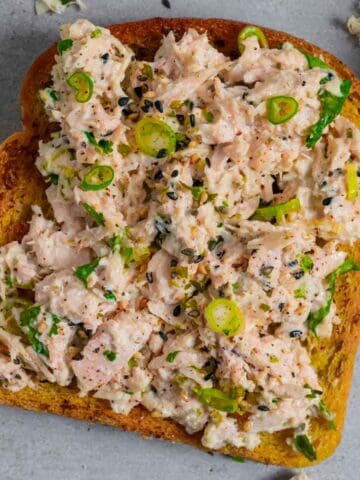
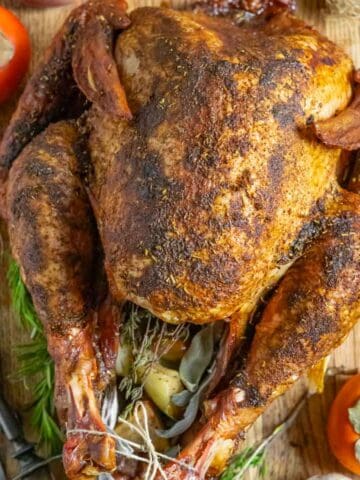
Comments
No Comments